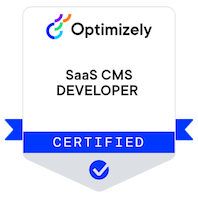The Iron Triangle
A Developer's Guide to Navigating Constraints
In the world of software development, the Iron Triangle (also known as the Project Management Triangle) serves as a visual metaphor to understand the constraints of project management: scope, time, and cost. For developers, working within these constraints can often feel like trying to solve a puzzle where every piece affects the others. Let's explore how to effectively navigate this triangle and what to do when all points are fixed.
Understanding the Iron Triangle
The Iron Triangle hinges on the principle that you can't change one point without affecting the others. Here's a quick breakdown:
Scope encompasses what needs to be done or the project's requirements.
Time refers to the deadlines or when the project needs to be completed.
Cost covers the budget, which includes resources, tools, and labour.
For developers at digital agencies, this triangle serves as a daily reality check, reminding us that the ideal scenario (high quality, low cost, quick delivery) is often a myth.
Navigating the Triangle
When working within the Iron Triangle, developers can adopt several strategies to ensure project success:
Prioritise and Communicate: Clearly understand what's most important to stakeholders. Is it speed? Is it quality within a certain budget? Effective communication with project managers and clients from the outset can help set realistic expectations.
Agile Methodology: This approach allows for more flexibility within the triangle by breaking the project into smaller, manageable sections (sprints), enabling adjustments to scope, time, and cost as the project progresses.
Continuous Delivery: Implementing continuous integration and continuous delivery (CI/CD) pipelines can help automate testing and deployment, reducing time and cost while maintaining scope.
Technical Debt Management: Be strategic about what 'corners you cut'. Accumulating too much technical debt can increase costs and time in the long run. It's about finding the right balance.
What happens when all points are fixed?
The toughest scenario is when scope, time, and cost are all non-negotiable. Here's how it can be tackled:
Focus on MVP (Minimum Viable Product): Identify the core features that are essential for project launch. This allows you to deliver value while staying within the constraints.
Resource Efficiency: Leverage existing tools and libraries that can save development time. Reuse code where possible and choose technologies you're familiar with to speed up the process.
Stakeholder Engagement: Keep stakeholders in the loop about the trade-offs involved. Sometimes, demonstrating the impact of fixed constraints can lead to adjustments in expectations or resources.
Risk Management: Identify potential bottlenecks and challenges early. Having a contingency plan can help mitigate risks that threaten to extend deadlines or inflate costs.
Conclusion
For developers, the Iron Triangle isn't just a theory; it's a daily challenge. By adopting flexible methodologies, focusing on essential features, and maintaining open lines of communication, developers can navigate these constraints more effectively. Remember, success within the Iron Triangle requires creativity, negotiation, and a bit of strategic thinking.
Andy Blyth
Andy Blyth, an Optimizely MVP (OMVP) and Technical Architect at 26 DX with a keen interest in martial arts, occasionally ventures into blogging when memory serves.



